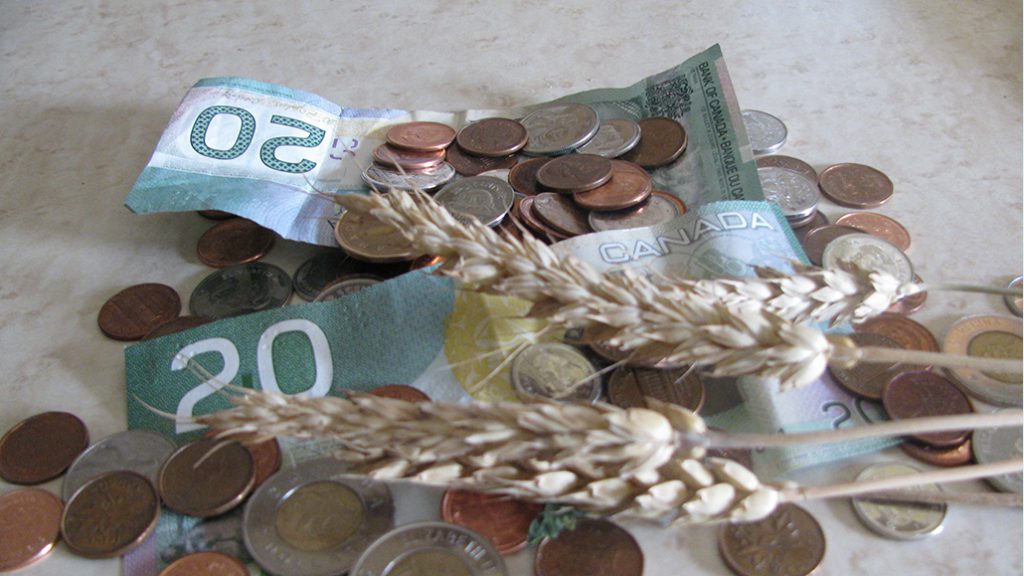Exporting grain with a stronger dollar
DEMAND OVERCOMING CURRENCY FLUCTUATIONS

A STRONG CANADIAN dollar relative to its American counterpart is no friend to Ontario grain farmers in many ways. But experts are not nearly as dismayed by the impact of a soaring loonie on grain export markets. In fact, there seems to be agreement that a strong Canadian dollar is a bit of an illusion and there’s little to no concern about a negative impact to any grain market export opportunities.
Craig Klemmer, principle agriculture economist for Farm Credit Canada, even says that he anticipates reasonably favourable market conditions for Ontario grain exports this fall and offers positive projections for the coming year.
“We continue to see very strong demand for soybeans, despite some very large acres going in and very large crops and the corn market remains fairly well supplied,” he summarized. “The wheat markets are likely going to remain supportive to export for this year, but I wouldn’t forecast they stay that high on a long term basis if we get a normal crop in North America next year.”
At publication time, it remained too soon to predict the impact of the American corn crop on exports but Klemmer is the first to warn that the impact of the dollar is a wildcard to keep an eye on.
Early in 2017, he hadn’t anticipated the Canadian dollar would exceed much more than 75 cents U.S. As long as it doesn’t surpass the U.S. dollar, it will continue to support grain exports.
“The U.S. corn crop will obviously determine some of the market opportunity — it’s not always about the currency, but overall, the dollar remains supportive of relatively strong exports, just maybe not as strong as they were at a 75 cent dollar.”
Klemmer explains that although the exchange market has been somewhat volatile, what’s really happening isn’t so much that the Canadian dollar is losing out to world currencies, but is more reflective of a declining U.S. dollar.
“So, we’re slightly less competitive relative to exports from the United States,” he says, “but against other partners we’d be competing with, that ratio remains more balanced at this point. Therefore, those export opportunities outside of the United States will continue to remain fairly robust.”
DOLLAR NEUTRAL
Michael Dolega, senior economist at TD Economics, largely supports Klemmer’s observations and even suggests the current forecast for the Canadian dollar is best described in a single word — boring.
“I think the rally we’ve seen has largely run its course; we don’t think there’s much more of an upside for the dollar,” he says. “We do expect the Bank of Canada is going to continue to raise rates — we still have another rate hike projected for this year, then two more for next year which should keep it ‘dollar neutral’ as far as monetary policy going forward.”
Dolega believes the only real unknown is oil prices and there isn’t much movement expected there either. “But if oil goes to $60, I would certainly upgrade my Canadian dollar forecast significantly and the opposite would be true if oil were to go to $30 or $40.”
He says there has always been a strong correlation between the Canadian dollar and oil exports but that has been a real secondary story to the difference in monetary policy between Canada and the United States in recent months.
CASH PRICES
Steven Kell, business manager for Parrish & Heimbecker, goes further by expressing some concern even about the attention American politics and media are commanding on this side of the border.
“Canadian farmers are overwhelmed by American media,” he says. “We start talking about where grain prices are going to go, and people make prognostications based on how much the futures market goes up and down but the exchange rate has a bigger impact on the cash prices that we take home as Canadian farmers than all the movement in the Chicago futures.”
He finds that because producers in Ontario read American market reports, there’s a tendency to pay less attention to currency. That can entice farmers into holding onto crop because of, for example, an impending drought in the great plains which promises gains of $1 per bushel.
“But in the meantime, the Canadian dollar moves from 72 cents to 80 cents and that costs you more than $1 per bushel,” he explains. “We need to refocus people on the fact that we are selling in Canadian dollars and it’s a massive variable. Quit being overwhelmed by other stuff and focus on the money.”
Kell says the actual outflow of grain going out of Ontario was actually pretty good in the summer, perhaps on account of being booked earlier in the year. He also emphasizes that the Canadian dollar, relative to world currencies other than the U.S. dollar, has been relatively steady.
“The reality is that, the world still needs our grain,” he says. “International demand has not really slowed at all, our supply is pretty good, and the challenge for the Canadian farmer is just to find the lows on the Canadian dollar so that he can take home a cash price that feels good.” •
























